Stained glass ceilings: features and benefits
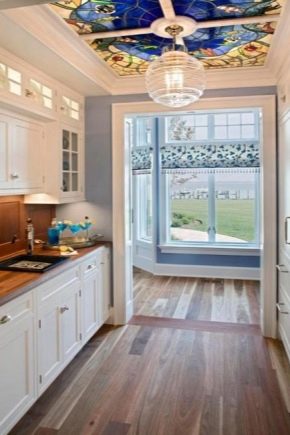
Modern stained glass windows are not at all those stained glass windows that poorly transmit light, which were used in the Middle Ages to decorate temples. Now a stained-glass canvas can be created in no less than ten different ways and installed on the surface the owner desires, including the ceiling. In addition, the process of installing a stained glass window has become much easier and, if you wish, you can do it yourself.
Ceiling stained-glass windows have a large number of both aesthetic and practical advantages. The most obvious advantage is their uniqueness and stunning beauty. The stained glass ceiling will become a highlight of any room, wherever it is installed.
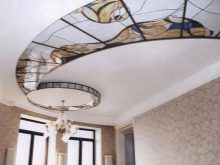
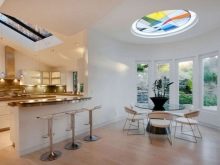

In addition, such ceilings do not require special maintenance - you just need to avoid the use of hot water and detergents (you can not use either liquid or powder).
This type of ceiling has other advantages:
- Uncomplicated and short-lived installation, even if you carry it out yourself. Stained glass suspended structure resembles a constructor, which is quite easy to assemble in any configuration.
- From the point of view of ecology, the advantages are also obvious - stained-glass ceilings consist of glass and metal, no chemicals are used in the materials for their production.
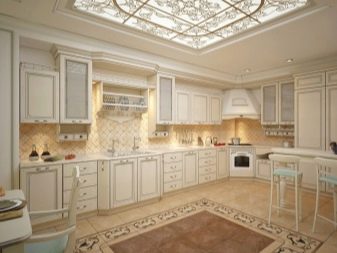
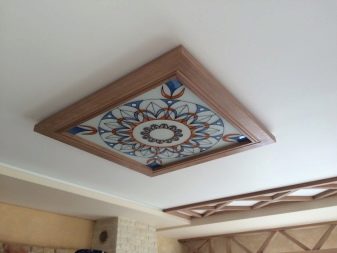
- The design is practical - any damaged section can be easily replaced without harming the rest of the elements.
- The products are easy to clean.
- It is difficult to break the stained-glass windows, unless, of course, you do it on purpose.
- The glass is not susceptible to moisture. Metal is susceptible, but in the case of installing an aluminum profile, this problem is eliminated. Therefore, this type of ceiling can be installed in the bathroom.
- The glass ceiling visually increases the space, therefore it can be used in small rooms with low ceilings.
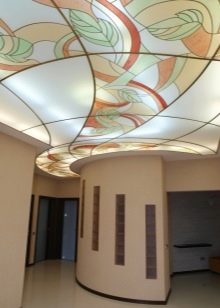
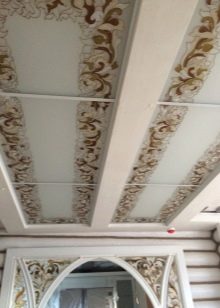
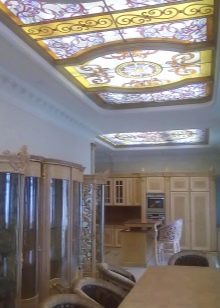
Types of glass for suspended ceiling structures
Today there are no less than ten ways how stained glass canvases are made. Most of them provide the opportunity to make a stained glass window yourself.
- Traditional (classic) the way to create a stained glass window requires a special frame that has both flexibility and strength. Glass elements will be inserted into this frame - each in its own cell. Most often, this frame-frame is made of aluminum.
- Film stained glass is the simplest and most affordable type for self-production. You can do this with your own hands at home, since it is not a stained glass window, but an application. Glass of the required size is pasted over with a special stained glass film. This technique also includes the method of photo printing, which can be applied directly to glass or previously onto film, and then transferred to glass. It is also possible to place the film between the glass layers.
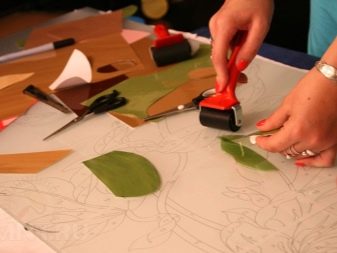
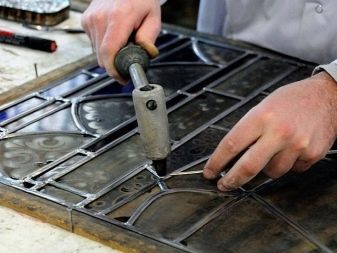
- Fusing technique assumes that the glass fragments are sintered in special furnaces into a single whole. Fusing allows you to get both flat and volumetric stained-glass windows.
- As for the fragmentary stained glass window, its production is possible only in industrial production. The technology of its manufacture is such that individual fragments of specified colors are combined into a single stained glass window. It turns out to be reliable, durable and does not lose the brightness of the colors over time.
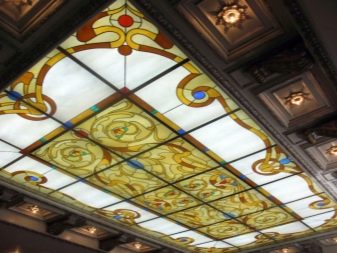
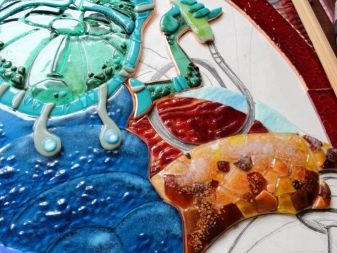
- Sandblasting type stained glass is otherwise called eternal.It is applied using a pressurized stream of sand. This technique allows you to make a matte surface of the stained glass, and not just multi-colored.
- Contour (filling) technique looks like a drawing, because to obtain a stained glass window of this type, glass is painted with polymer paints, having previously applied sides made of the same polymers or designating them with a special composition as the contours of the future composition.
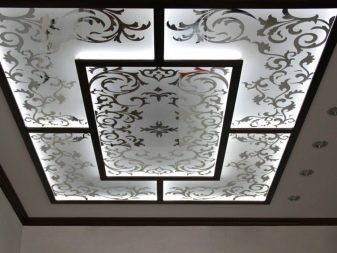
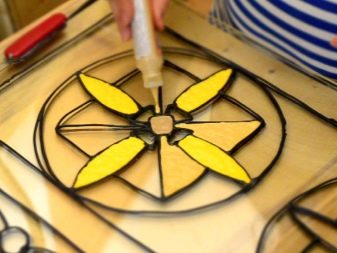
- Painting technique is no different from painting with gouache or acrylic. The drawing is applied in the same way. Both the fill and the painting are not stained-glass windows, but imitate it.
- An interesting technique of etchingwhen the glass is treated with a paste with hydrofluoric acid. The pattern on the glass surface is matte and rough in texture. This method allows you to achieve a relief image with a play of light and shadow, focusing on the depth of etching.
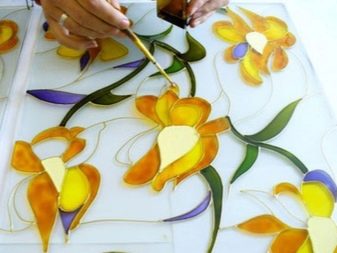
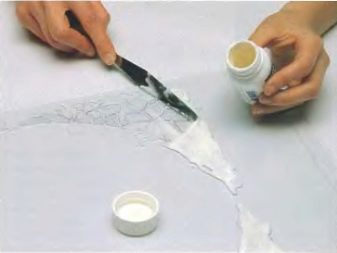
- Stained glass "Tiffany" create in this way: all the fragments of the future stained-glass window are in turn wrapped around the perimeter of the ends with copper foil, then they are connected into one structure using a blowtorch and solder. In this way, you can create not only a flat stained glass window, but also give it any geometric shape. This technique is both the most difficult to perform and the earliest known. It was this method that was used to decorate window openings, ceilings and arches in medieval buildings.
In addition, it is possible to use a combined technique, for example, Tiffany and classics, or etching and sandblasting.
In general, each of the listed types (except Tiffany) is suitable in order to use it in the design of the ceiling.
To avoid monotony in manufacturing, you can either order its creation from professionals, or use the film method, in which the glass is covered with a film with a pre-applied photo print on it.
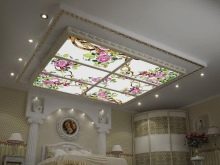
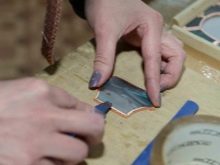
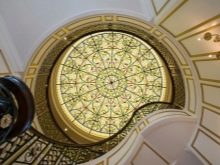
DIY installation of a stained-glass ceiling surface
The installation of most of the stained glass panels on the ceiling is similar to the installation of an armstrong ceiling, since their design is almost identical to each other. The only difference is what type of profile and decorative inserts you need to use. Glass inserts are used for the stained-glass window, and pressed paper is used for the Armstrong for the same purpose.
If you paint step by step the installation of a ceiling with a stained glass window, you get the following algorithm:
- The first step is markup. Set the level of the future ceiling structure. On the floors, points are marked where the fasteners will be installed. For more accurate markings, it is best to use a laser level.
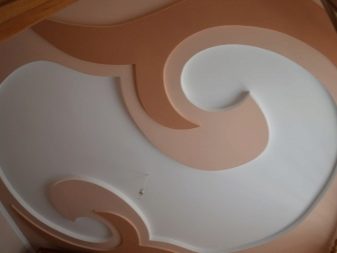
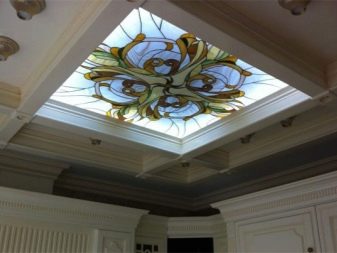
- The next step is to attach the corners to the walls. Their installation is carried out in accordance with the markings made earlier, either on dowels or on self-tapping screws. Taking into account the severity of a material such as glass, the step of the fasteners should not be more than 30 cm.
- Further, special adjustable hangers - "butterflies" are fastened with a step of approximately 60 cm in any direction.
- After that, you can proceed with the installation of the profile. This process consists of hanging it on hangers and placing it on a plane.
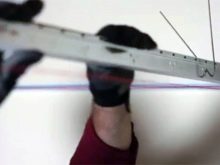
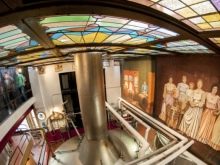
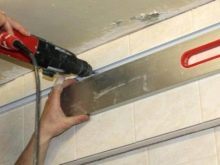
- At the end of the collection of profiles, it is time to install decorative lighting. When the stained glass ceiling is illuminated, it looks much more spectacular and attractive than the usual one. Backlighting can be done using different methods: both spotlights and light beams or LED strip.
- In the last turn, the installation of the stained-glass glasses is carried out. They are simply put into cells that are formed by profiles.
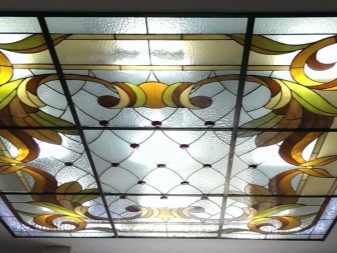
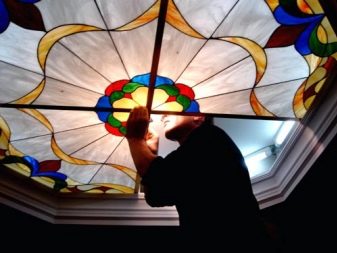
Stained glass ceiling canvas in the interior
There are 3 options for how you can install a glass ceiling:
- hanging option (the best thing you can think of for small stained glass canvases);
- cassette design;
- installation in a box made of gypsum plasterboard, inside which wires, communication lines and overlapping are hidden.
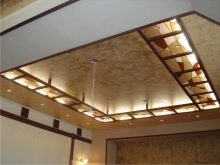
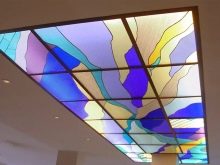
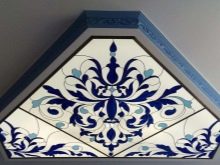
The third option is the most inconvenient, because:
- it is bulky;
- requires decorating the side surfaces of the box if it is installed in the lower level of a two-tier structure;
- drywall may not withstand the weight of the glass, so additional fastening on metal hangers is required.
It is impossible to classify stained glass ceilings by the nature of the pattern, since there are a great many variations, and they do not lend themselves to gradation.
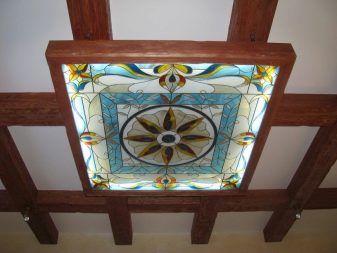
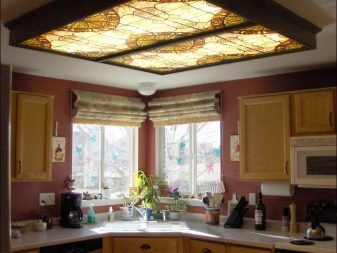
In terms of form, they are divided into the following types:
- domed;
- round (oval);
- plafond;
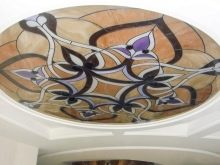
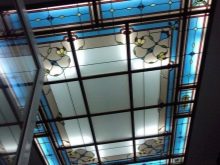
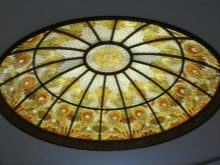
- in the form of a square or rectangle;
- non-standard.
For halls with a large ceiling height and overall area, the best option is a dome. They can be made exclusively using the Tiffany technique.

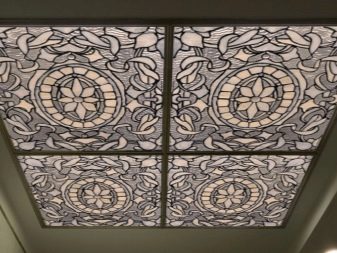
Circular ceilings look like a chandelier with a large diameter. It is most successful to perform them in the Art Deco or Art Nouveau style (of course, the rest of the interior of the room should be designed in the same style). However, the ethnic style can also be a good find if you choose the right pattern for the glasses.
The plafond has a lot in common with the round type, but in shape it is more like a ball. Its size can be absolutely any. Shaded glass windows usually look best when installed in a niche. The plafond installed in a small bedroom looks spectacular.
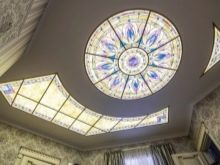
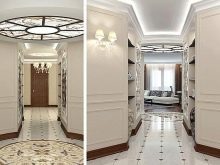

The standard shape of the stained-glass ceiling is rectangular or square. They are the easiest to manufacture and therefore the most cost effective option. In addition, this type of ceiling can be used to decorate any premises, regardless of their size and purpose - both in the corridor and in the kitchen, a rectangular stained-glass canvas will look equally impressive.
As for non-standard forms, here the author's imagination is not limited by anything.
Glass fragments can take any shape and shape. For example, a loft-style abstraction can create the illusion of a bottomless, “ceilingless” space.
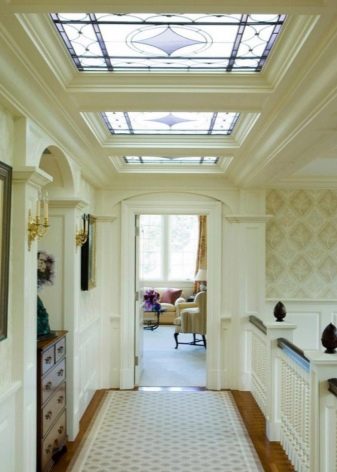
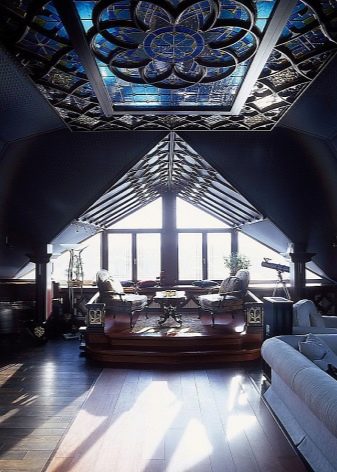
Lighting in the stained glass ceiling
Thanks to the illumination, the stained-glass canvas can be made weightless, or the image can be made deep and expressive. The result depends on which technique is used. It will be difficult to achieve this without installing light sources, because a stained-glass window definitely needs to be correctly illuminated. Lighting will help paint the room in the selected shades, creating a very special atmosphere.

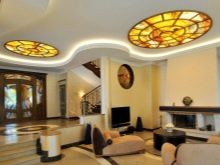
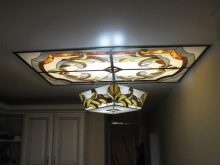
It is imperative to think about how the number and type of the selected lamps will be combined with the pattern on the stained glass window. Hidden lighting looks very impressive, when light seems to be pouring from the ceiling, while not a single lamp is visible. It looks especially interesting on matte ceilings, for example, made using the sandblasting technique.
Chandeliers are not used in stained glass. As a rule, other illumination is sufficient for high-quality lighting of the room.
You will learn about the installation of a stained-glass ceiling from the following video.













The comment was sent successfully.